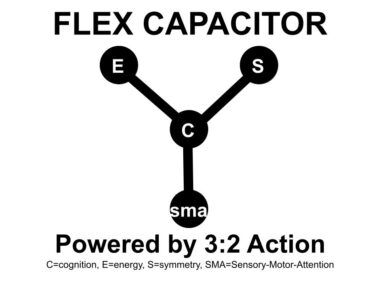How I imagine a ‘flex capacitor’ could help me time-travel with Parkinson’s
Fantasies about health, inspired by Michael J. Fox and his 'Back to the Future'

Flash back with me to the mid-1980s to early ’90s, the acting heyday of our beloved Michael J. Fox and his “Back to the Future” film series. Remember how time travel in the films was made possible by retrofitting a DMC DeLorean vehicle with a flux capacitor device? It was the core component of the time machine and required a power input of 1.21 gigawatts (pronounced in the film as “one point twenty-one jigowatts”) combined with the car’s speed; travel through the space-time continuum was triggered when it hit 88 mph.
This thought is a stretch, but sometimes it’s interesting to suspend our disbelief and think about fictional phenomena as they apply to real life. Here’s a related, completely made-up concept I sometimes use when thinking about Parkinson’s disease — or health in general, for that matter.

A diagram of a “flex capacitor,” for application to Parkinson’s. (Illustration by Doc Irish)
What exactly is a “flex capacitor”? Let’s start with its opposite: stiffness, or having minimal capacity for flexibility. It seems that many of the cardinal Parkinson’s problems are related to stiffness:
To me, stiffness is the enemy. It feels like a heart attack that won’t stop, manifesting as a sense of overwhelming stress, like I’m constantly flexing, twisted, and absolutely not flexible. I spent a night in the hospital in 2019 (one year before my Parkinson’s diagnosis) because of heart attack concerns, although the tests were inconclusive. Those symptoms continue — sometimes worse, sometimes not as bad — and I guess that’s just my Parkinson’s experience.
I believe this feeling is rooted in abnormal neuronal synchrony, or broken symmetry, the pathology that underlies several brain disorders, including Parkinson’s, essential tremor, and epilepsy.
Can you imagine having a time machine to take you away from this? My dream machine is built around the flex capacitor with three primary components:
- Free-flowing energy
- Rhythmic symmetry
- Smoothly engaged sensory-motor-attention.
The target destination is a world with effortless action. Time would move slowly, but moving quickly would be easy. It could happen in the future or the past. Brain-body connections would be precision-tuned.
Getting to our maximum “flex capacity” is, in a sense, what we’re all seeking, isn’t it?
Of course, I do realize the notion of trying to increase capacity for flexibility and offset age-related changes contains a large element of common sense. The same principle applies to many things in real life. And we can rattle off a raft of related expressions, such as “adapt or die” and “bend, don’t break.”
When I read scientific articles or papers, I frequently ask myself, “Is there some aspect of elasticity to this?” I find it’s commonly true. The hidden spring, the mechanism behind our flow state, seems to be the capacity for flexibility. We see its fundamental significance with the following:
- Metabolic flexibility
- Exercise flexibility
- Cognitive flexibility.
At a time when real-world Parkinson’s solutions are developing slowly and problems are progressing way too fast, maybe it’s OK to temporarily dream about a supernatural fix or a pending therapy. We can imagine capturing lightning to power our change. We can fantasize about fixing our internal clock and transforming our future.
And then, even better: When we’re done dreaming, we can also choose to snap back to reality. Here and now.
There, we can mix in some real-world flexibility, with toughness and resilience. Here are some tips we might follow:
- Fight to cope differently on different days.
- Keep an open mind.
- Accept what we cannot change.
- Switch up our routines.
- Don’t get stuck on the couch drinking a beer too much.
- Keep moving — adapt today, mentally and physically.
- Bend, don’t break.
- Create our futures one step at a time.
As Fox said in a recent interview, talking about the recent documentary of his life, “Still: A Michael J. Fox Movie,” as well as his life with Parkinson’s, “I say in the movie I’m a tough son of a bitch. I can get through anything I face.”
You’re the star of your own show. Be a tough son of a bitch.
Note: Parkinson’s News Today is strictly a news and information website about the disease. It does not provide medical advice, diagnosis, or treatment. This content is not intended to be a substitute for professional medical advice, diagnosis, or treatment. Always seek the advice of your physician or another qualified health provider with any questions you may have regarding a medical condition. Never disregard professional medical advice or delay in seeking it because of something you have read on this website. The opinions expressed in this column are not those of Parkinson’s News Today or its parent company, Bionews, and are intended to spark discussion about issues pertaining to Parkinson’s disease.








Kate Maen
I have just read your article and wanted to make a short comment. I believe that i contracted {D while living on a horse ranch in central Calfornia. The area where i lived was sprayed bi weekly with some sort of herbicide, although i do not know exactly what. I have been tested for the genetic link and i do not have it. This is not how i planned my retirement.